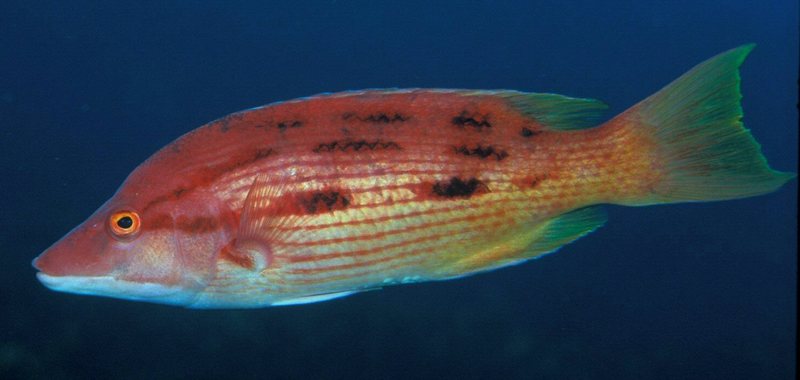|
| 질의: Small white | 결과: 1205번째/2237 | |
Red Pigfish (Bodianus unimaculatus) - Wiki
| 제목: | Red Pigfish (Bodianus unimaculatus) - Wiki
| |

| 해상도: 1471x698
파일크기: 136313 Bytes
촬영일: 2006:05:29 21:11:15
등록시간: 2007:09:20 17:02:57
|
Red pigfish
From Wikipedia, the free encyclopedia
[Photo] Red Pigfish (Bodianus unimaculatus). Photo by Ian Skipworth. License: public domain
The red pigfish, Bodianus unimaculatus, is a wrasse of the genus Bodianus, found in eastern Australia including Lord Howe Island and Norfolk Island, and around New Zealand, including the Kermadec Islands, in reef areas at depths of between 5 and 40 m. Its length is between 30 and 50 cm.
The red pigfish when young has a long pointed snout with slightly concave forehead profile, and protruding fleshy mouth. Coloring is yellow with thin red longitudinal lines on the body and three rows of darker red splotches on the back.
Male adult colours are dark red on the back and silvery-red on the belly with a large white patch under the soft dorsal fin. The outer rays of the lunate caudal fin are thickened and long.
Spawning takes place during the winter and spring, as is usual for this genus. Their diet consists of a wide variety of small prey animals including many kinds of molluscs, crabs, amphipods, brittlestars, and small sea urchins.
http://en.wikipedia.org/wiki/Red_pigfish
| The text in this page is based on the copyrighted Wikipedia article shown in above URL. It is used under the GNU Free Documentation License. You may redistribute it, verbatim or modified, providing that you comply with the terms of the GFDL. |
|
^o^
동물그림창고 똑똑전화 누리집
^o^
|
|